Exploring the Aesthetic Depth of Jujutsu Kaisen Tapestry
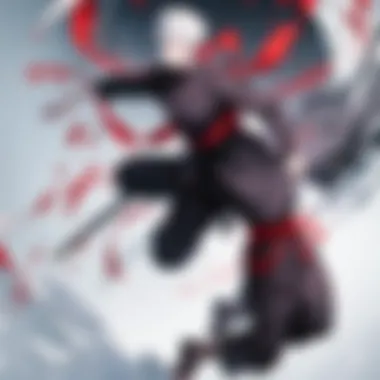
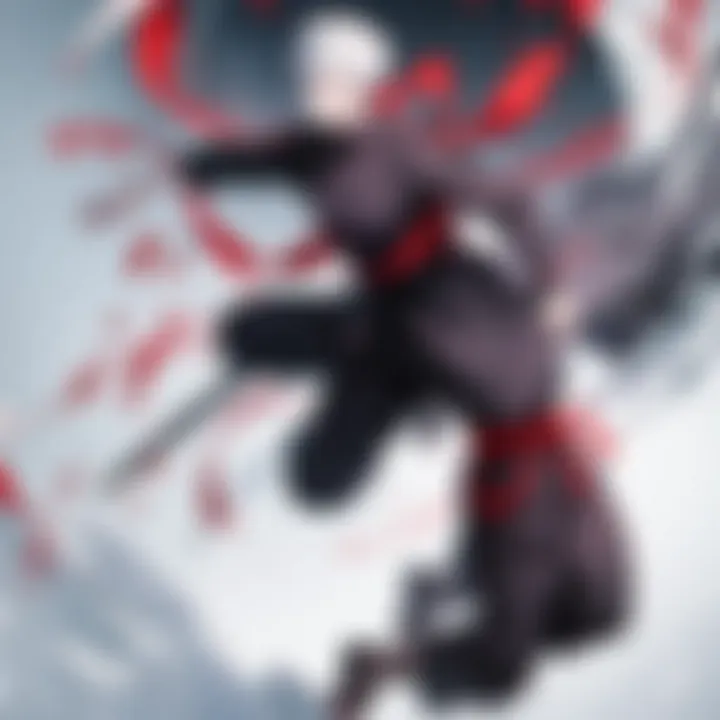
Intro
The world of Jujutsu Kaisen captivates audiences with its rich narratives and stunning visual art. This exploration looks closely at how the intricate aesthetics of the anime tapestry connect the story and characters through artistic representation. The tapestry serves not just as a backdrop but as a canvas illustrating deeper themes and cultural insights.
As anime continues to grow in popularity, Jujutsu Kaisen stands out for its unique blend of horror and action, layered with character depth and narrative complexity. This article provides a thorough examination of elements that contribute to its standing in contemporary anime.
Character Profiles
Overview of Main Characters
Jujutsu Kaisen features an array of characters, each contributing significantly to its plot and themes. Yuji Itadori, the protagonist, embodies resilience and moral dilemmas as he navigates the world of curses. His duality—between being human and housing a cursed spirit—highlights the show's central conflicts. Disregarding his own life for the sake of others reveals his selfless nature.
Megumi Fushiguro, another lead character, contrasts Yuji's brashness with introspection and deep-seated struggles. His development throughout the series showcases themes of fate, responsibility, and the burdens of lineage.
Lastly, Nobara Kugisaki brings a much-needed balance with her fierce independence and pragmatic outlook. Each character’s journey intertwines, creating a rich tapestry that forms the crux of the narrative.
Supporting Characters
Supporting characters in Jujutsu Kaisen enhance the narrative's depth. Satoru Gojo, a mentor figure, presents a complex character who challenges the roles of power and responsibility. His flamboyant personality masks a deeply insightful character, reflective of the themes of mentorship and moral ambiguity.
Other notable characters, such as Mahito and Sukuna, serve as antagonists that embody the darker aspects of existence. Their philosophies challenge the protagonists, offering valuable lessons in the realm of curses and sorcery. Each character's involvement enriches the tapestry, allowing viewers to grasp the intricate dynamics of the series.
Theme Exploration
Central Themes
The themes woven throughout Jujutsu Kaisen revolve around the nature of life, death, and the conflicts between good and evil. The existential struggles faced by characters elevate it beyond mere entertainment. Friendship, sacrifice, and the consequences of choices resonate deeply throughout the storyline, prompting viewers to reflect on their moral compass. Such themes are crucial in understanding not only the characters but the cultural fabric surrounding them.
Cultural References
Cultural references in the series add further layer to its aesthetic. The incorporation of various Japanese myths and folklore into the storytelling serves as homage to traditional narratives. This blend of contemporary issues with ancient themes offers richness that invites analysis. This uniqueness in storytelling connects Jujutsu Kaisen to a broader conversation about modern anime's role in preserving and reinventing cultural narratives.
"Through its characters and themes, Jujutsu Kaisen becomes a rich narrative tapestry that invites analysis beyond the screen."
Popular Series and Recommendations
Top Anime Series of the Year
For those interested in series that exhibit similar complexity and artistry, consider:
- Demon Slayer: Kimetsu no Yaiba
- Attack on Titan
- My Hero Academia
These series, like Jujutsu Kaisen, are notable for their engaging plots and deep character development.
Hidden Gems in Manga
If you are seeking lesser-known manga that delve into similar themes, explore:
- Chainsaw Man
- Tokyo Revengers
- The Promised Neverland
These selections offer rich narratives, exploring profound themes that may resonate well with fans of Jujutsu Kaisen.
Prelims to Jujutsu Kaisen Tapestry
The significance of Jujutsu Kaisen tapestry lies in its distinctive ability to merge visual art with rich storytelling. This intricate relationship invites viewers to explore the depth of characters and narratives encapsulated within the fabric, making each piece a testament to the series’ theme.
Overview of the Series
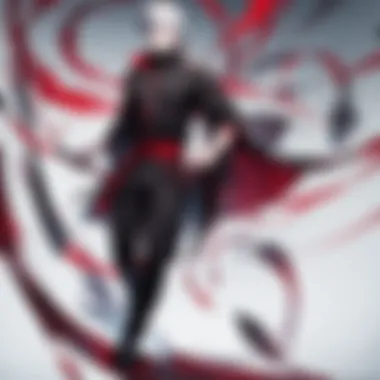
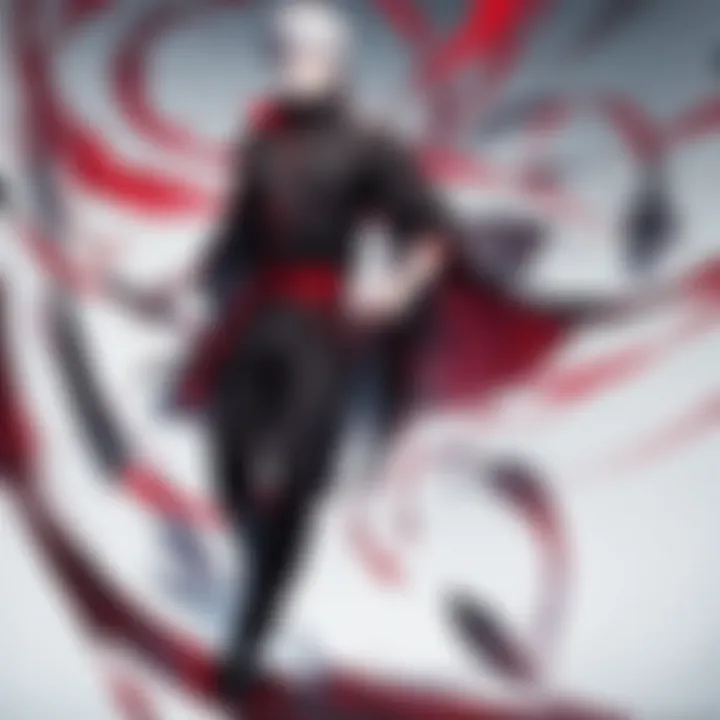
Jujutsu Kaisen is more than a typical shonen anime. Since its debut, it has gained immense popularity, appreciated for its compelling narrative and complex characters. The story centers around Yuji Itadori, a high school student who becomes embroiled in the supernatural world of curses and sorcerers after ingesting a cursed object. The narrative explores themes of mortality, ethical dilemmas, and the balance of power.
The series captivates the audience with exceptional animation and character development. This artistic quality easily translates into tapestry art. Tapestries representing various scenes and characters allow fans to engage with the series on a new level. They serve as a medium that celebrates the art style and themes central to the narrative.
What is a Tapestry?
A tapestry is a form of textile art typically woven by hand. It consists of threads forming images, patterns, and colors, often telling a story or representing significant themes. Historically, tapestries have been used for decoration, storytelling, and as records of cultural heritage.
In the context of Jujutsu Kaisen, tapestry art captures pivotal moments from the series and character journeys. These pieces not only enhance the aesthetic of a space but also provoke thought about the characters and their development. Tapestries reflect the complexity of the series, enabling discussions about its thematic depth and artistic merits.
"The fusion of narrative and art in tapestries allows for a multi-sensory experience that transcends simple viewing."
The Art of Tapestry in Japanese Culture
Tapestry holds a significant place in Japanese art, serving not only as a decorative piece but also as a narrative medium that captures cultural and historical contexts. This section delves into the importance of tapestry within Japanese culture and its specific connection to the artistry of 'Jujutsu Kaisen.' Understanding the cultural background enhances the viewer's appreciation of the tapestry's aesthetics and themes.
Historical Significance
Japan has a long tradition of textile arts, extending back centuries. Tapestries were historically created using various techniques, such as weaving and embroidery, often depicting historical events or mythological tales. These textiles served as dividers in large spaces or hung in temples, conveying messages through their imagery.
The introduction of tapestry to Japan also marked significant cultural exchanges, as techniques and styles were adapted from Chinese and European influences. By the Edo period, tapestry became synonymous with luxury, showcasing the skills of artisans and craftsmanship.
In the case of 'Jujutsu Kaisen,' the historical significance of tapestry enriches the narrative. Visual elements in the tapestry echo the show’s folklore, integrating tradition with modern storytelling. The connection between historical methods and contemporary themes adds depth to the viewing experience.
Symbolism in Tapestry
Symbolism is a key aspect of tapestry art in Japan. Each design element is often imbued with meaning, reflecting philosophical concepts or cultural beliefs. For instance, motifs such as dragons, cranes, and cherry blossoms carry representations of strength, longevity, and the ephemeral nature of life, respectively.
In 'Jujutsu Kaisen' tapestries, the chosen symbols communicate important ideas about the characters and plot. This provides viewers with a visual language to interpret the hidden layers of the series.
Here are some common symbols and their interpretations encountered in 'Jujutsu Kaisen' tapestries:
- Curses: Represent the struggles between good and evil.
- Shikigami: Symbolize the characters’ connections to their spiritual prowess.
- Colors and Patterns: Often selected based on emotional resonance, aiding in conveying feelings associated with the narrative.
"Tapestry serves as a bridge between the past and present, embedding cultural wisdom within contemporary expressions."
The intricate symbolism invites anime and manga enthusiasts to engage more deeply with the artwork. Understanding these symbols enhances the emotional and intellectual connection to the series, as viewers can appreciate the artistry beyond its visual appeal.
Through examining these elements, it becomes clear that the art of tapestry is not just about aesthetics; it is a powerful medium reflecting societal values, historical contexts, and intricate storytelling.
Character Representation in Tapestry
The concept of character representation in tapestry plays a pivotal role in expanding the narrative depth of "Jujutsu Kaisen". The way characters are depicted not only reflects their personal journeys but also their impact on the overarching themes of the series. Each character, with their unique traits and arcs, embodies specific attributes that resonate with viewers. This adds layers of meaning and fosters a deeper connection between the audience and the artwork.
When observing characters in tapestry, one notices that the visual cues serve to express emotions and relationships. This method of representation elevates them from mere illustrations to significant symbols of struggle, growth, and camaraderie. As viewers appreciate these representations, they can engage with the intricate interplay between the characters and the story itself.
Another important aspect is how the tapestry captures moments that define a character. The choice of colors, poses, and surrounding elements all contribute to a narrative that invites interpretation. This attention to detail makes the tapestry not just an aesthetic endeavor but also a storytelling vehicle. By emphasizing character representation in tapestry, we can see how this art form enhances our understanding of the characters’ roles within the "Jujutsu Kaisen" universe.
Main Characters Depicted
The main characters of "Jujutsu Kaisen" are expertly rendered in tapestry to highlight their distinguishing features. Characters like Yuji Itadori, Megumi Fushiguro, and Nobara Kugisaki are often portrayed in ways that emphasize their growth throughout the series. For example, Yuji’s spirited personality is reflected in vibrant colors and dynamic poses, while Megumi’s more reserved nature is evident through darker shades and composed postures. These visual cues help viewers grasp the essence of each character quickly without the need for textual explanation.
Moreover, the central antagonists also receive a significant amount of focus in tapestry. Characters like Ryomen Sukuna are depicted in a way that evokes their menacing presence and complexity. This contrast between heroes and villains further enriches the artwork, capturing the multifaceted nature of good and evil inherent in the series.
It is essential to recognize how each character's portrayal in tapestry resonates with the plot's progression. Their visual representation not only narrates their personal stories but also reflects the evolution of relationships and conflicts within the series, making it compelling and relatable to the audience.
Character Dynamics and Interactions
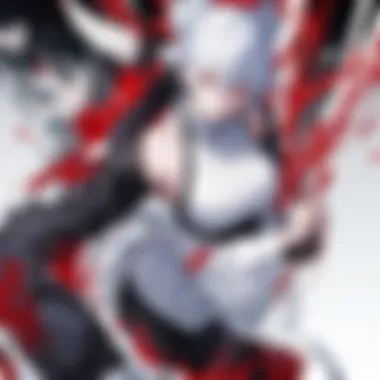
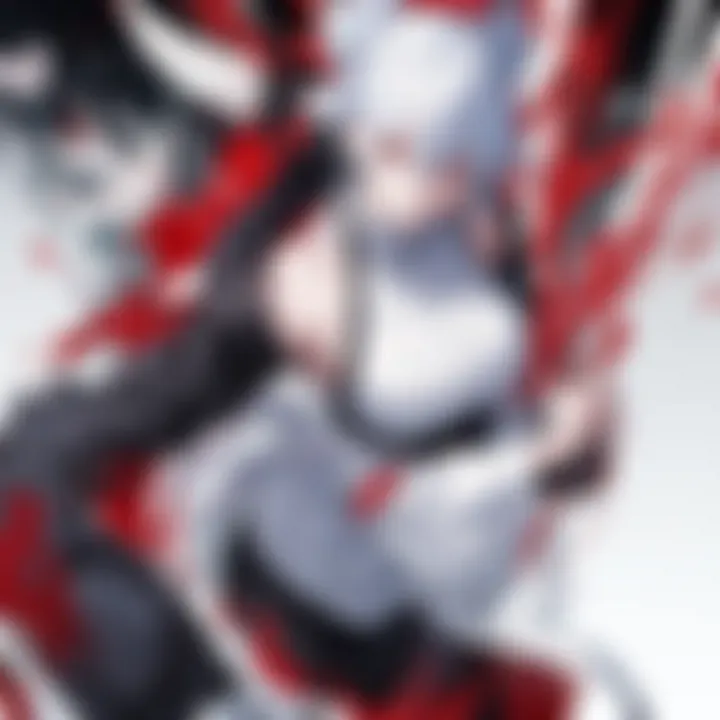
Character dynamics and interactions within tapestry provide a deeper understanding of the relationships that drive the narrative of "Jujutsu Kaisen". The way characters are placed in relation to one another often reveals the tension, friendship, or rivalry that exists between them. When examining tapestries that feature multiple characters, one can discern a rich tapestry of social connections that encourages viewers to consider the underlying themes of collaboration and conflict.
For instance, the relationship between Yuji and Megumi can be vividly illustrated. Their camaraderie is often depicted through their positioning, highlighting synergy in battle or critical moments of decision-making. This not only showcases their abilities but also their development as allies. In contrast, moments depicting conflicts with characters like Sukuna depict the stakes involved, underlining the serious nature of their struggles.
"Art, when done beautifully, can capture complexity within simplicity, revealing intricate layers of emotion and relationship."
Themes Embedded in the Tapestry
In the world of Jujutsu Kaisen, tapestry serves as a powerful visual medium that encapsulates the narrative and thematic essence of the series. The various themes embedded within these artistic representations not only highlight critical plot elements but also enhance the viewer's understanding of the character's journeys and struggles. By examining these themes, readers uncover a deeper appreciation for the intricate artistry that mirrors the series’ complexities.
Confrontation with Curses
A prominent theme in Jujutsu Kaisen tapestry is the confrontation with curses. This theme reflects the central conflict of the series, where characters strive against malevolent entities born from human fears and negative emotions. Tapestries often showcase intense scenes of battle, where the protagonists engage with these fears manifested as tangible threats.
The visual representation of these confrontations serves several purposes. First, it illustrates the relentless nature of the struggle against curses, emphasizing the emotional and physical toll it takes on the characters. The detailed imagery can evoke feelings of tension and urgency, making the viewer more invested in the outcomes of these encounters. The tension serves as a reminder of the ongoing battle against inner demons that many individuals face in real life.
Moreover, the colors and designs used in the tapestry convey the emotional landscape of these confrontations. Darker tones often dominate scenes involving curses, symbolizing despair and danger, while brighter hues reflect hope and perseverance as the characters fight back. This plays a significant role in creating a visual narrative that resonates with the audience, emphasizing the concept that battling one's curses is both necessary and challenging.
The Duality of Good and Evil
Another crucial theme represented in the Jujutsu Kaisen tapestry is the duality of good and evil. This theme is illustrated through the relationships between the characters and their inherent complexities. The tapestry captures moments of moral ambiguity, showcasing that neither side is strictly black or white. Characters like Yuji Itadori, who embodies both light and darkness, illustrate this duality through their decisions and alliances.
Through the art of tapestry, this theme is highlighted with contrasting imagery. Protagonists may be depicted in vibrant, hopeful settings, while antagonists lurk in shadowy backgrounds. This contrast does not merely delineate good from evil; it reflects the intertwined nature of these concepts. As characters evolve, they reveal layers that contribute to the narrative's richness.
"The struggle between good and evil is not merely an external battle; it is a reflection of our own internal conflicts."
The visual elements augment this theme's complexity. The artwork often integrates symbols and motifs representing concepts like sacrifice, redemption, and betrayal. For instance, intricate patterns can subtly imply that even the most benevolent characters may harbor darker motivations. This enhances the impact of the viewer’s experience, encouraging them to engage in reflections about their values and choices.
Visual Aesthetics of Jujutsu Kaisen Tapestry
Visual aesthetics play a pivotal role in the overall experience of 'Jujutsu Kaisen' tapestry. This aspect encompasses various elements such as color, design choices, textures, and composition. Each of these factors works harmoniously to convey the essence of the series while enhancing the emotional impact of its storytelling.
The immediacy of visual stimulation creates a connection with the viewer. The way colors interact can evoke emotions, guide attention, and communicate themes of the narrative. Therefore, understanding these aesthetic choices provides insights into character dynamics and overarching themes.
Moreover, the aesthetics contribute to the tapestry’s collectability and its status among fans. Enthusiasts often seek out unique pieces that reflect their passion for the series. As the anime grows in popularity, the demand for visually striking pieces increases, making the aesthetic appeal paramount.
Color Palette and Design Choices
The color palette of 'Jujutsu Kaisen' tapestry is carefully crafted to reflect the tone of the series. Dark colors dominate the fabric, with blacks and deep blues emphasizing themes of struggle and darkness. These hues often contrast with vibrant colors that represent hope and resilience. The choice of red is particularly potent, symbolizing both blood and conflict. It aligns well with the series's exploration of curses and moral dilemmas.
Design choices further amplify this essence. Each tapestry captures key scenes or characters, serving as visual narrations of pivotal moments. Such representations resonate with fans, providing not just decoration but a connection to the storyline.
Textural Elements and Composition
Textural elements in 'Jujutsu Kaisen' tapestry are integral to its aesthetic value. Materials used in the tapestry may vary from soft fabrics to more robust, textured weaves, affecting the overall appearance. The texture can influence how light interacts with the piece, thereby changing how colors are perceived. This complexity adds layers to the tapestry, inviting viewers to explore its details.
Composition is equally important. The arrangement of characters, symbols, and backgrounds creates a balance that guides the viewer's eye. Effective composition can enhance the narrative embedded within the tapestry, making each piece a storytelling medium in itself.
"The interplay of color, texture, and composition transforms these tapestries into multidimensional representations of an otherwise flat narrative."
Cultural Impact of Jujutsu Kaisen
The cultural impact of Jujutsu Kaisen extends beyond its narrative and aesthetic appeal. This series has influenced not just its audience, but also the broader anime industry. Understanding this impact is essential for appreciating its significance within the wider scope of contemporary anime.
Influence on Contemporary Anime
Jujutsu Kaisen has redefined certain conventions of shounen anime. It combines elements of traditional storytelling with modern animation techniques. The series showcases complex characters who deal with profound ethical dilemmas. This shifts the focus from mere battles to character development. Newer anime often mirror this focus, indicating a shift in audience expectations.
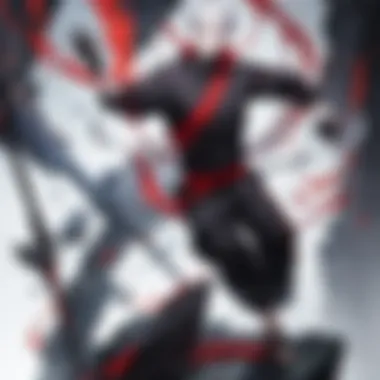
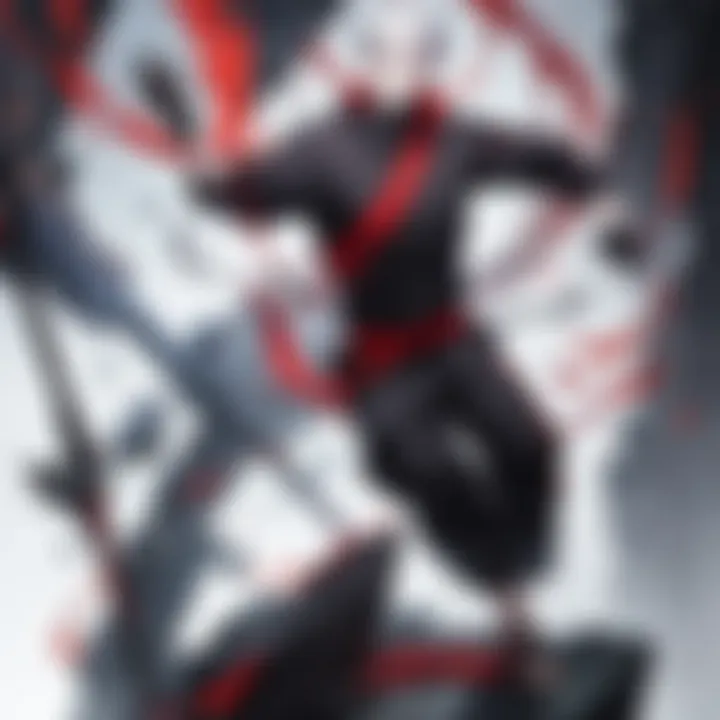
Visually, the art style of Jujutsu Kaisen represents a new standard. The dynamic action scenes and fluid animation have inspired other creators. Many contemporary anime shows now place more emphasis on high-quality animation. This is a stark contrast to previous years where story often took precedence over visuals.
Global Reception and Community Response
The reception of Jujutsu Kaisen has been overwhelmingly positive. Critics and fans alike praise its storytelling and character depth. This has fostered a strong community around the series. Social media platforms are filled with discussions, fan art, and theories.
Community responses have contributed to the series' ongoing relevance. Online forums like Reddit and dedicated fan pages on Facebook serve as platforms for interaction. Fans engage with the content, leading to further exploration of its themes and characters.
"Jujutsu Kaisen stands as a beacon for both new and seasoned anime fans, redefining how narratives can interact with their audience."
The series has also sparked discussions about its cultural influences. Many fans analyze how Jujutsu Kaisen addresses issues such as mental health and moral ambiguity. This has opened up dialogues within the anime community, enhancing the viewer's understanding of the characters and their struggles.
Collectability and Merchandise
The cultural phenomenon surrounding Jujutsu Kaisen has extended beyond the screens and pages of manga and anime into the realm of collectability and merchandise. This aspect serves not only as a testament to the series' popularity but also adds depth to its artistic expression through tangible forms. Collectible items, especially those featuring tapestry art, encapsulate key moments, characters, and themes from the series, offering fans a way to engage with the narrative on a more intimate level.
Market Trends for Tapestry Art
Market trends indicate a rising demand for tapestry art influenced by Jujutsu Kaisen. This growth correlates with the increasing visibility of anime culture globally. Fans seek unique pieces that enhance their living spaces while reflecting their fondness for the series. Popular online platforms and comic conventions provide arenas for buying and selling these tapestries. Additionally, limited edition prints often fetch higher prices due to their scarcity and the fandom’s willingness to invest in high-quality merchandise.
- Limited Editions: These pieces often become highly sought after, influencing both buyers and sellers.
- Platforms for Purchase: Etsy, Crunchyroll, and Redbubble are popular avenues for obtaining these tapestries.
- Artistic Quality: Tapestries that employ high-quality materials and detailed artwork tend to sell better.
Collectible Editions and Fan Culture
The success of collectible editions ties closely with fan culture, which thrives on showcasing their passion for Jujutsu Kaisen. Fan cultures often promote communal gatherings through events, online forums, and social media.
- Community Engagement: Fans often share their collections on platforms like Reddit and Facebook, discussing the intricacies of design and rarity.
- Creation of Subgroups: Some collectors form specific groups dedicated to tapestry art from anime, sharing tips on where to find rare pieces and showcasing their acquisitions.
- Network of Enthusiasts: This culture fosters lasting relationships among collectors, enhancing the communal experience around the art.
Collecting tapestry art from Jujutsu Kaisen is more than a hobby; it is an avenue for fans to express their love for the series. Through these collectibles, they keep the stories and visuals alive in the physical space of their lives.
Educational Aspect of Tapestry
The role of tapestry in education is not often highlighted, yet it possesses the potential to serve as an invaluable teaching tool. Especially in the context of Jujutsu Kaisen, the visual narratives crafted in tapestry format enhance understanding of complex themes and character interactions. Educators can employ these artworks to facilitate discussions about storytelling, cultural context, and artistic interpretation.
Tapestry as a Learning Tool
Tapestry offers a unique intersection of art and education. It transforms passive observation into active engagement. For instance, a tapestry depicting a scene from Jujutsu Kaisen can serve as a starting point for critical discussions. Students can analyze the choices made by the artist in color and form. They can explore how these decisions enhance or alter the narrative.
Moreover, tapestry allows for a multi-faceted exploration of themes. In Jujutsu Kaisen, students can delve into the duality of good and evil illustrated in various scenes. This examination fosters a deeper connection to the material. It makes themes more relatable by connecting visual art to philosophical queries.
The tactile nature of tapestry also engages learners who benefit from kinesthetic experiences. Touching and interacting with fabric can invoke thoughts and connections that mere visual analysis cannot.
Artistic Techniques and Inspirations
Examining the artistic techniques used in tapestry creation deepens appreciation for the medium. The artisans behind Jujutsu Kaisen tapestries employ various methods, including dyeing, weaving, and embroidery. These techniques reflect centuries of tradition, showcasing how innovation coexists with history.
Furthermore, the inspirations drawn from the anime itself inform tapestry design. Elements such as character styles, color choices, and key motifs manifest in the textile art. Artists often use techniques from traditional Japanese art while integrating modern influences. As a result, the tapestries reflect a synthesis of past and present cultural aesthetics.
In essence, the educational aspect of tapestry in the Jujutsu Kaisen context provides valuable insights into not only the narrative but also artistic heritage. By engaging with tapestries, learners gain both knowledge and appreciation for this rich art form, enhancing their overall understanding of anime and its cultural significance.
Finale
The narrative of anime and tapestry art intertwine seamlessly within the world of 'Jujutsu Kaisen.' This article explores how the intricate designs and rich themes embedded in the tapestry reflect broader cultural conversations and artistic expressions. Creating a tapestry inspired by 'Jujutsu Kaisen' is not merely a craft but an act of storytelling. Each thread captures the essence of characters and their journeys, while also addressing the cultural significance of curses and the dichotomy of good and evil.
The Future of Jujutsu Kaisen Tapestry
As 'Jujutsu Kaisen' continues to rise in popularity, the future of its tapestry art appears promising. We may see an increase in collaborations between artists and brands to create limited-edition pieces, enhancing its collectability. Additionally, new fabric technologies might allow for even more complex designs that could draw from the evolving narrative of the series. Collectors can also expect innovative themes that reflect changing societal values, merging fandom with contemporary art movements.
Final Thoughts on Artistic Representation
Artistic representation in 'Jujutsu Kaisen' tapestry serves as a multifaceted approach to storytelling. It is not only about visual appeal; it brings depth to character development and narrative engagement. The way characters are depicted within these tapestries provides fans with a fresh lens through which to understand their favorite series. Through this medium, the stories become more than just animated visuals; they transform into a tangible form of art that resonates across cultures and ages.
"Art is the most beautiful of all lies." This sentiment rings true, especially in the tapestry of 'Jujutsu Kaisen,' where narrative intricacies unfold beautifully, leaving a lasting impact on its audience.





